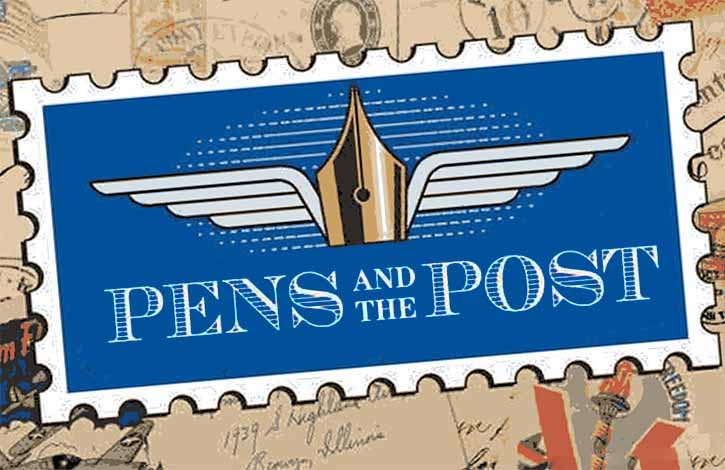Fountain pens on stamps
Writing has always been an integral part of human culture, and the ways in which people have recorded their thoughts and messages have changed over time. The transmission of ideas was boosted by the advent of the postal service, with the appearance of stamps on letters (1840), which gave rise to the world of stamp art, including mail art as a separate genre (1960). In parallel, fountain pens have followed a similar evolutionary trajectory. I have collected memories of the meeting of stamps and pens.

For centuries, letters were written with bird feathers. These feathers were mostly made from cut lute feathers. However, the frequent sharpening of the nibs caused inconvenience, and as technology improved, new writing instruments were developed: the quills were later replaced by steel-tipped dipping pens. These pens were made of harder materials and the nibs were interchangeable. The dip pens were followed by pens with ink reservoirs. This invention, or rather its inventor Petrarche Poienaru, was commemorated by the Romanian Post Office in 2010 (read more about Poenaru)

This development made writing much easier and helped to make handwritten letters more widespread. A succession of pen companies appeared and industrial pen production began. Fountain pen advertisements also appeared on the surface of letters. The following letter was posted in 1894. The postman's job of finding the addressee was not easy.


Swan advertising
The diversity of inks was also an important factor in the development of writing. Inks were often made from natural materials, such as berries or roots, in small quantities, when ballpoint and dipping pens were used. However, with the emergence of the stationery industry, the supply side also adapted to demand: inks with a wide range of colours and better adhesion were also available to the "common child of the people".

Japanese stamp from the 1980s (Nippon means Japan)

The pen first appeared on Hungarian stamps in the 1960s. To be precise, I have not found any earlier. The picture below shows a lady in folk costume writing down her thoughts on the new economic mechanism (communism) at the post office.

In the 2000s, Magyar Posta issued a sheet of pens under the title Üzenet Bélyegem (My Message Stamp) as part of a series of occasional series (graduation, zodiacal sign, Budapest).

The pictures show three different types of writing instruments: a Montblanc Bohéme fountain pen with ruby stones, a Montblanc Starwalker ballpoint pen and a steel-tipped writing instrument with a dipping tip. The Montblanc logo has been smeared in several places, and the tip of the pen that slides into the picture has been removed (the 4810 has been left). Perhaps the culture of writing instruments is richer than this, and the range could have been more colourful, but the limited space available is known to the hungarian post office.
The arch above is a good summary of the history of the pen and correspondence: the traditional way of writing letters by hand is disappearing with the rise of modern technology. Handwritten letters are rare nowadays, as email and electronic messaging are faster and more convenient ways of sending messages, and unlike stamps, they are free. Most physical mailboxes have also been dismantled.
However, the old companion still appears here and there on the qr-coded ribbon stamps (stickers):


Szűcs Tamás / 2024

